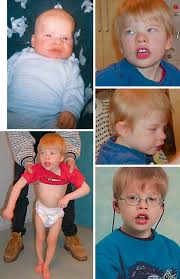VarSeq is an intuitive, integrated software solution for tertiary analysis. With VarSeq you can automate your workflows and analyze variants for gene panels, exomes, and whole genomes. Understanding genomic data has never been easier thanks to our software.
Clinical genetic testing often requires looking for and interpreting Copy Number Variants (CNVs) as well as small point mutations. While NGS based gene panels and exome tests have become the best practice assay for many types of genetic tests, CNVs must be acquired using a different paradigm.
Golden Helix has pioneered an industry leading CNV calling algorithm that operates on existing clinical NGS gene panel, exome and whole genome NGS data. Along with the calling of CNV events, the entire workflow is managed inside VarSeq’s clinical interpretation workflow. This integration enables CNV events to be considered alongside the annotated and filtered NGS small variants and incorporated into clinical reporting using VSReports.
INTUITIVE & REPEATABLE WORKFLOWS
VarSeq software provides a powerful filtering and annotation engine to sift through large variant data sets. Using a chain of filters, you can quickly narrow your list of variants down to those that are most likely to be of interest. After determining the parameters that work well for your analysis, you can save the state of your filters so that you can easily apply the same analysis to another dataset. The same automated workflow can be used for each batch of samples, making VarSeq an ideal solution for high-throughput environments. Real-time filtering gives you the power to quickly prototype and tune analysis workflows to the specific gene panels that your lab uses. Once the appropriate set of filters have been found, the workflow can be saved and applied to future sequencing outputs without having to re-enter any parameters.
INDUSTRY LEADING ANNOTATION SOURCES
After data import, annotations are automatically applied based upon your pre-configured settings. Additional annotations can then be added at any time during the analysis process. The Golden Helix team curates a wide selection of public databases and updates these datasets on a quarterly basis. The specific annotations used in your analysis are stored locally with your data and are never changed without your explicit request. This ensures that your analysis is performed on a stable dataset and your results are reproducible and available in the future.

DETECTS CNVS
VS-CNV is able to detect CNVs in your NGS data sets. It ascertains multiple metrics from samples along with matched controls to make CNV calls with high and consistent accuracy and sensitivity to meet the thresholds for clinical validation and adoption.
CLINICAL GRADE VARIANT ANNOTATIONS
Included in VarSeq is functionality similar to SnpEff or Variant Effect Predictor. Each variant is mapped to all overlapping transcripts and information about the region where it is located (exon, intron, intergenic, etc.), sequence ontology (frameshift, synonymous, etc.), and HGVS notation (g dot, c dot, and p dot) is provided. You can choose to filter against the highest-impact annotation for each variant or the entire set of variant-transcript interactions.
VISUALIZATION
Since GenomeBrowse is built into VarSeq, it is easy to verify coverage across your amplicons. Simply add your BAM and BED files to your project and inspect the pileups directly. GenomeBrowse provides the context you need to have confidence that your upstream sequencing pipeline is working correctly.
NO LEARNING CURVE
Import your data, select a workflow and start exploring. It is that simple! No uploading data. No complicated parameter selection. No difficult file conversions. VarSeq distills the analysis process down to its very essence and removes all roadblocks that get in the way of getting work done.